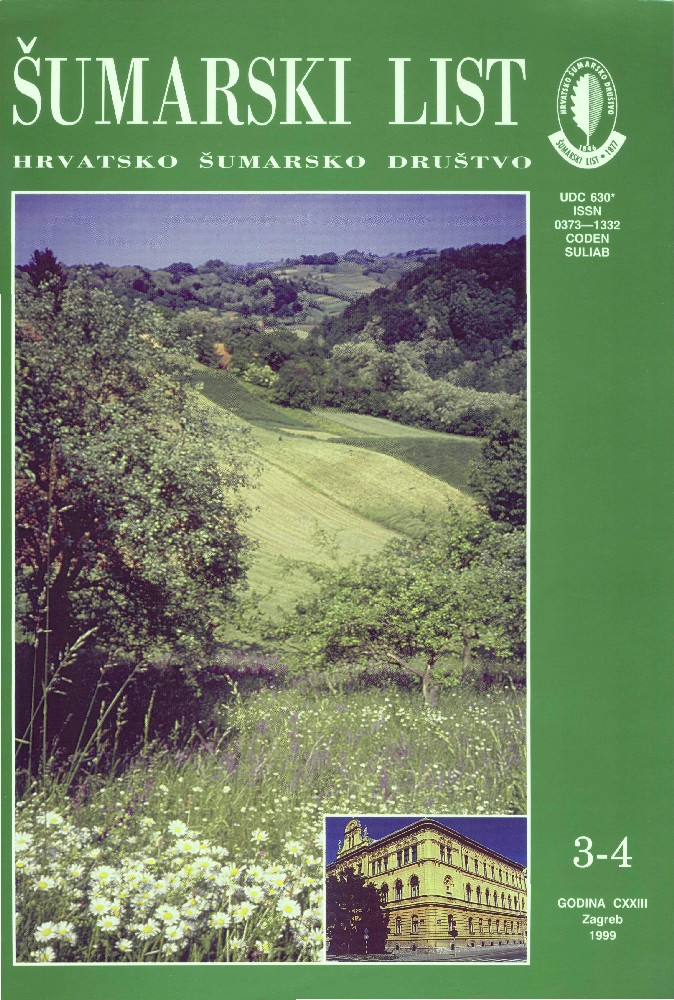| |
| IZVORNI ZNANSTVENI ČLANCI |
| |
|
|
| Pleše, N., Juretić, N. | UDK 630* 444 (001) |
| Virus Disease of Field Elm (Ulmus minor Mill.) in Croatia
pdf
HR
EN
|
95 |
| Pernar, N., Bakšić, D., Španjol, Ž. | UDK 630* 114.2 + 235 (001) |
| Some Characteristics of Humization in Pine Plantations on the Island of Rab
pdf
HR
EN
|
101 |
| Kovačević, M. | UDK 630* 231 + 434 (001) |
| Natural Regeneration of Wood and Macchia on the Burned Surfaces in Arboretum Trsteno
pdf
HR
EN
|
109 |
| |
| PRETHODNO PRIOPĆENJE |
| |
|
|
| Grubešić, M., Dorotić, I. | UDK 630* 156 + 41.423 : 116 |
| The Impact of Flood on Game and Hunting
pdf
HR
EN
|
119 |
| |
| PREGLEDNI ČLANCI |
| |
|
|
| Harapin, M. | UDK 630* 453 |
| The horse-chestnut miner (cameraria ohridella Deschka & Dimić) a dangerous pest in Europe
pdf
HR
EN
|
129 |
Summary: The horse-chestnut miner (Cameraria ohridella Deschka & Dimić) was first registered as a pest in the Ohrid area (Macedonia). The species was first mentioned by Simova-Tošić and Filev 1985. Deschka and Dimić were first describe the species in 1996. The first individual attack in Zagreb was registered by Maceljski in 1989.The pest spread rapidly out of Macedonia to Yugoslavia, Croatia, Slovenia, Italy, Hungary, Check Republic, Slovakia and Germany. There are 3 to 4 generations of the hors-chestnut miner in Croatia every year (Maceljski & Bertić, 1996.). The larvae hibernate in fallen leaves. Due to strong attacks leaves turn brown in the middle of the summer (July) and fall off. Owing to these attacks the survival of the horse-chestnut is endangered. In Hungary and Austria the biological control of the pest is being successfully carried out.
Key words: the horse-chestnut miner; spread; bioecology; control |
| |
| STRUČNI ČLANCI |
| |
|
|
| Knepr, J. | UDK 630* 241 + 362 |
| Simultaneous Research on the Performance of Motor Trimmers and Chain Saws
pdf
HR
EN
|
133 |



